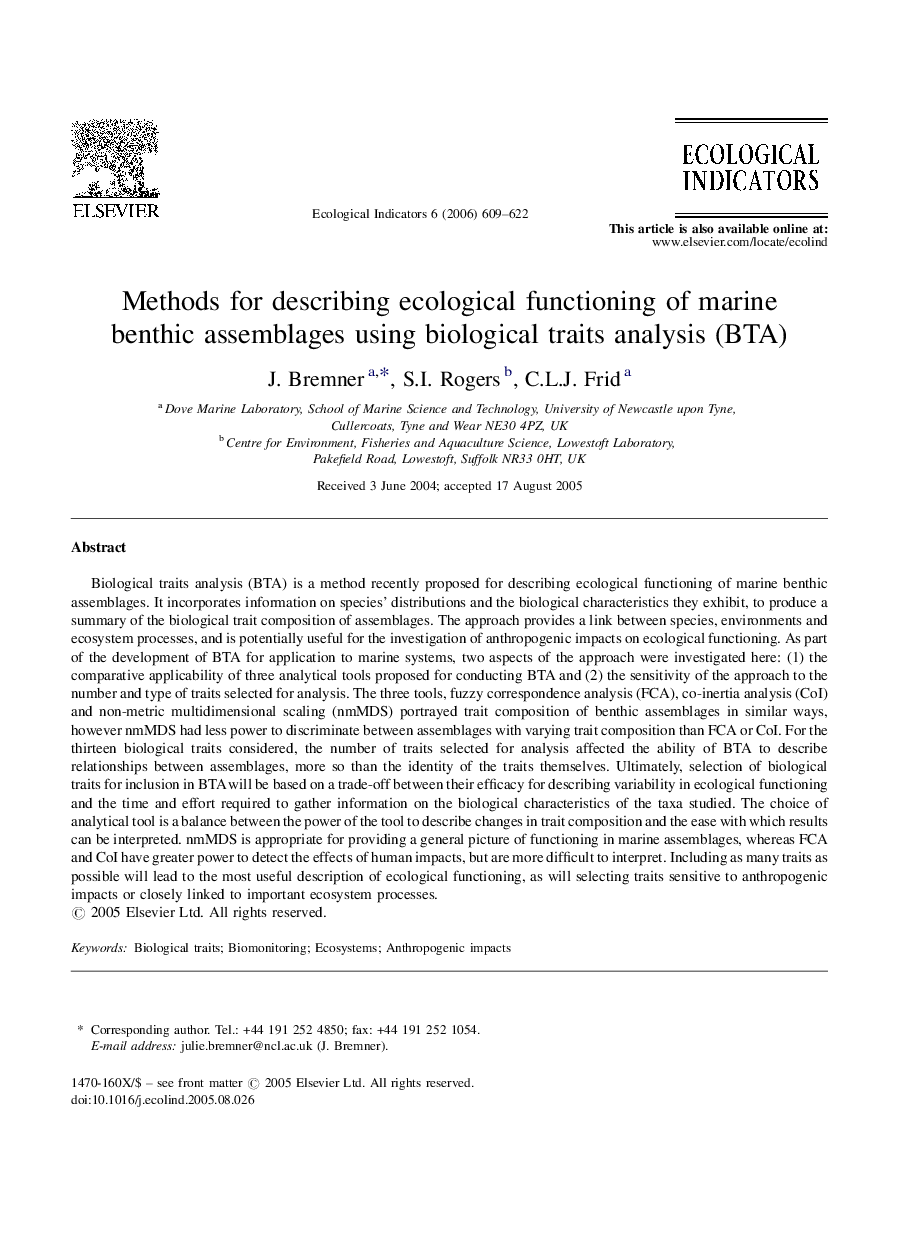| کد مقاله | کد نشریه | سال انتشار | مقاله انگلیسی | نسخه تمام متن |
|---|---|---|---|---|
| 4374735 | 1303196 | 2006 | 14 صفحه PDF | دانلود رایگان |
عنوان انگلیسی مقاله ISI
Methods for describing ecological functioning of marine benthic assemblages using biological traits analysis (BTA)
دانلود مقاله + سفارش ترجمه
دانلود مقاله ISI انگلیسی
رایگان برای ایرانیان
کلمات کلیدی
موضوعات مرتبط
علوم زیستی و بیوفناوری
علوم کشاورزی و بیولوژیک
بوم شناسی، تکامل، رفتار و سامانه شناسی
پیش نمایش صفحه اول مقاله

چکیده انگلیسی
Biological traits analysis (BTA) is a method recently proposed for describing ecological functioning of marine benthic assemblages. It incorporates information on species' distributions and the biological characteristics they exhibit, to produce a summary of the biological trait composition of assemblages. The approach provides a link between species, environments and ecosystem processes, and is potentially useful for the investigation of anthropogenic impacts on ecological functioning. As part of the development of BTA for application to marine systems, two aspects of the approach were investigated here: (1) the comparative applicability of three analytical tools proposed for conducting BTA and (2) the sensitivity of the approach to the number and type of traits selected for analysis. The three tools, fuzzy correspondence analysis (FCA), co-inertia analysis (CoI) and non-metric multidimensional scaling (nmMDS) portrayed trait composition of benthic assemblages in similar ways, however nmMDS had less power to discriminate between assemblages with varying trait composition than FCA or CoI. For the thirteen biological traits considered, the number of traits selected for analysis affected the ability of BTA to describe relationships between assemblages, more so than the identity of the traits themselves. Ultimately, selection of biological traits for inclusion in BTA will be based on a trade-off between their efficacy for describing variability in ecological functioning and the time and effort required to gather information on the biological characteristics of the taxa studied. The choice of analytical tool is a balance between the power of the tool to describe changes in trait composition and the ease with which results can be interpreted. nmMDS is appropriate for providing a general picture of functioning in marine assemblages, whereas FCA and CoI have greater power to detect the effects of human impacts, but are more difficult to interpret. Including as many traits as possible will lead to the most useful description of ecological functioning, as will selecting traits sensitive to anthropogenic impacts or closely linked to important ecosystem processes.
ناشر
Database: Elsevier - ScienceDirect (ساینس دایرکت)
Journal: Ecological Indicators - Volume 6, Issue 3, August 2006, Pages 609-622
Journal: Ecological Indicators - Volume 6, Issue 3, August 2006, Pages 609-622
نویسندگان
J. Bremner, S.I. Rogers, C.L.J. Frid,